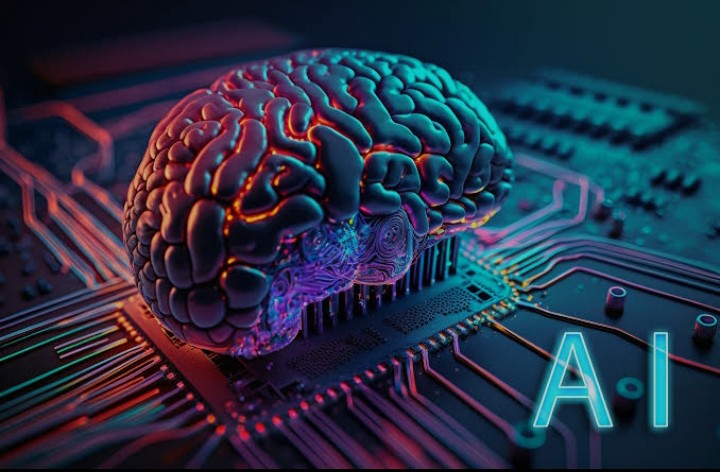As the internet boom of the late ‘90s and early ‘00s occurred, suddenly, there was a vast expanse of digital territory that needed filling. Not dissimilarly, from the California Gold Rush of 1848, forward-thinking digital pioneers rushed to meet this bountiful new land of opportunities, and the concept of content creation was born. Thousands of websites came into existence over the next several years, each filling page after page of the internet’s databanks with the written word. However, in 2024, several decades later, things have changed substantially regarding content creation and online writing.
Artificial Intelligence (AI) has become an invaluable tool for so many industries, automating mind-numbing or mundane tasks to remove the toil of human workers. However, when it comes to writing, the mundane task that AI automates is the entirety of the job. AI is increasingly used in content creation, from generating articles to assisting with marketing copy.
Moreover, audiences are very much aware of the proliferation of AI-generated content. Entire websites that used to act as venues for authentic expressions of the human mind via writing now serve as conveyor belts for AI-generated work. Because of this work’s overwhelming quantity and often lackluster quality, maintaining authenticity in content is more important than ever for building trust with audiences. That’s why tools such as an AI writing detector are valuable resources in today’s digital marketplace.
Why Original, Authentic Content Matters in a Digital-First World
What is the point of writing? It’s a multi-faceted issue with an answer that is seemingly simple and deceivingly complex. Writing is one of the truest forms of human expression, as the writer takes the thoughts that reside solely within their head and transcribes them into a legible form so that these ideas might be communicated to others. Like other art forms such as painting, music, or filmmaking, writing is something that most people encounter daily. It is often taken for granted, especially in this modern digital age. But writing is a herculean feat that takes tremendous bravery and insight. To share one’s thoughts, which are not present anywhere else in the world other than in that specific writer’s head, is a deeply personal form of expression.
And yet, AI is none of these things, and we as humans are keenly aware of this. AI-generated writing has not been filtered through anyone’s lens of experience or perspective; it has no core values or ideals that it strives to grapple with, nor does it have any actual opinion on the matter upon which it is writing. Rather, AI functions as a digital blender, taking information that is put into it and repackaging it into a new product. Audiences are now more discerning than ever, valuing transparency and originality in their content.
Because of the chasm between AI-generated writing and handmade writing, businesses and creators can set themselves apart by prioritizing the genuine communication that comes with authentic writing and verifying the quality of their content. By emphasizing human touch, creativity, and intentionality, businesses and creators reinforce trust, connect more meaningfully with their audiences, and maintain a competitive advantage.
The Role of Technology in Verifying Authenticity
AI detection tools use plagiarism checkers, grammar tools, and AI writing detector software to help ensure content quality and authenticity. These tools have been engineered to better recognize and identify AI-generated content, helping audiences and content creators better understand exactly what AI-generated writing is, what it looks like, and its limitations.
These tools can identify AI-generated text and help creators verify that their content aligns with brand values and audience expectations. They help differentiate human creativity from automated output, encouraging transparency and trust across content platforms.
How an AI Writing Detector Works
An AI writing detector identifies text generated by machine learning models. These machine learning models are at the core of all AI-generated writing, as the AI generator takes from the information input into its system and repurposes it to a vaguely new effect in the work it generates. This has frequently resulted in extensive plagiarism in the past, as AI is driven by actual identifiable intelligence but is instead algorithmically driven, in much the same way your social media feed is. By identifying the kinds of grammar, word, and structural choices commonly made by these models, AI writing-detecting tools can parse AI-generated writing in effective ways.
These tools are extremely useful in contexts like journalism, education, and content marketing, where originality and credibility are essential to the validity of the piece as a whole.
Best Practices for Authentic Content in the Age of AI
Some of the best practical tips for maintaining authentic content include balancing AI-assisted creation with human review and regularly auditing content quality. In this way, AI-generated content is ultimately filtered through a distinctly human lens, helping to eliminate any elements of plagiarism and giving the piece an actual sense of authorial ownership.
Using tools like an AI writing detector, even when you’re not using AI-generated writing, can be incredibly helpful in ensuring that the final product is accurate and genuine.
Embracing Tools to Support Content Integrity
As industries implement AI and struggle with the inherent growing pains that come with such innovation, using verification tools is becoming an industry best practice. Businesses leverage these tools to better protect their reputations, meet audience expectations, and ensure content authenticity. Adopting these tools now will help prepare brands and creators for future content standards and verification advancements as AI integration grows.
While these tools have room for improvement, they can be a beneficial tool to companies. It is important to realize detectors are not fully accurate, so they should be used with that in mind.
The Path to Quality Content in a High-Tech World
Using content verification tools to navigate the changing digital content landscape has never been more important. As AI implementation continues to spread throughout the digital landscape, tools such as AI detectors provide a meaningful way to combat and identify the symptoms of overwhelming AI generation.





